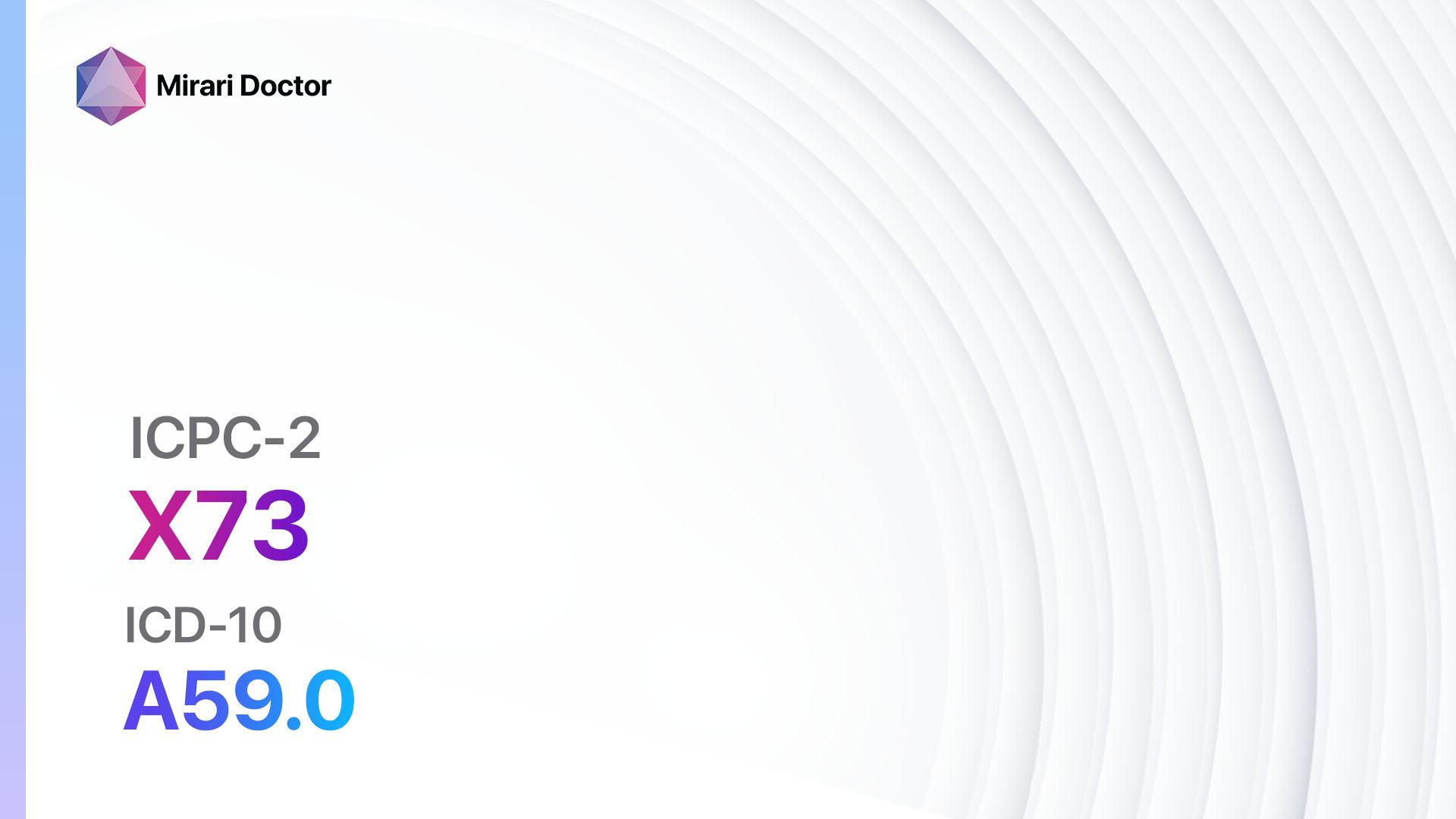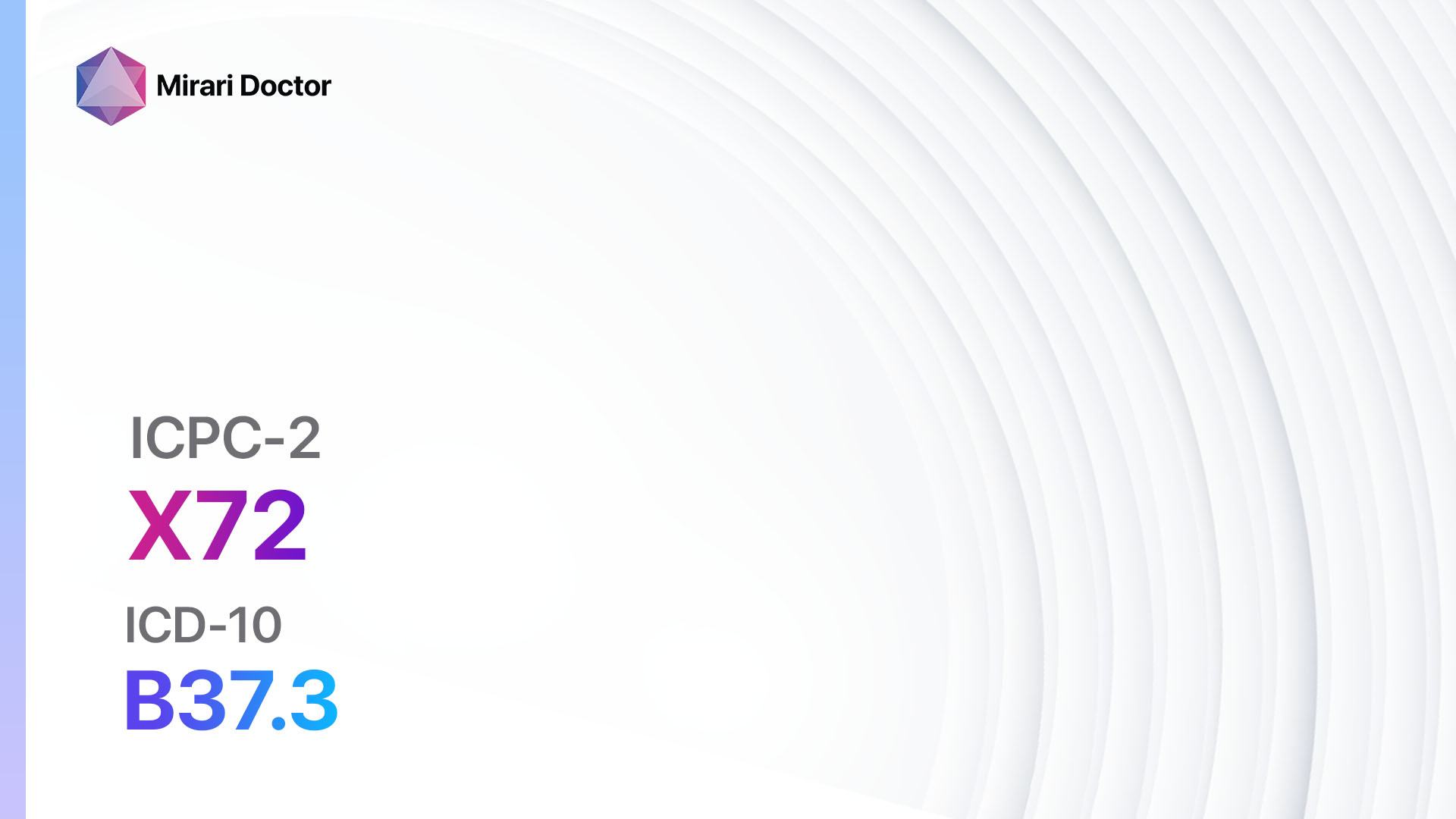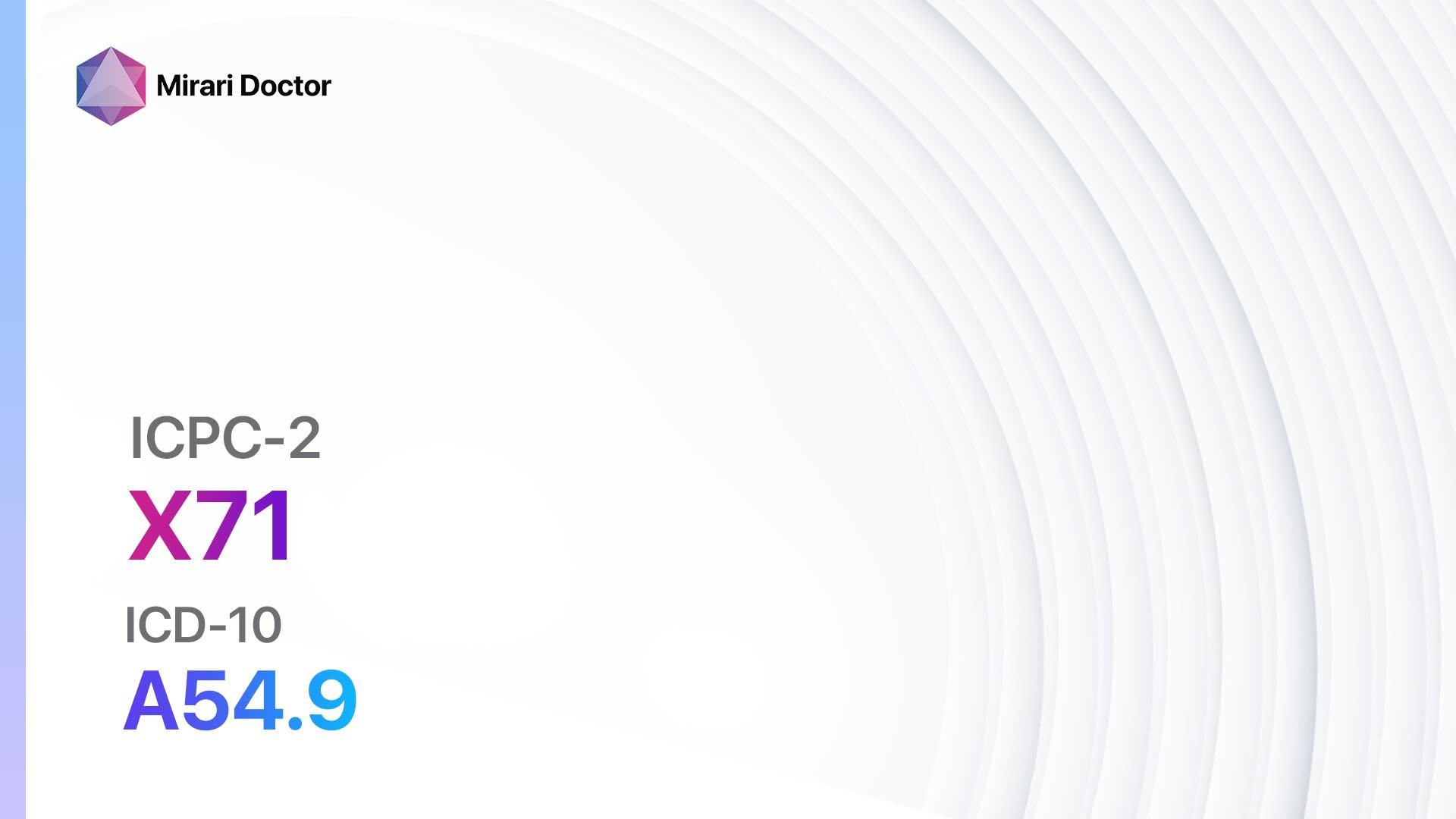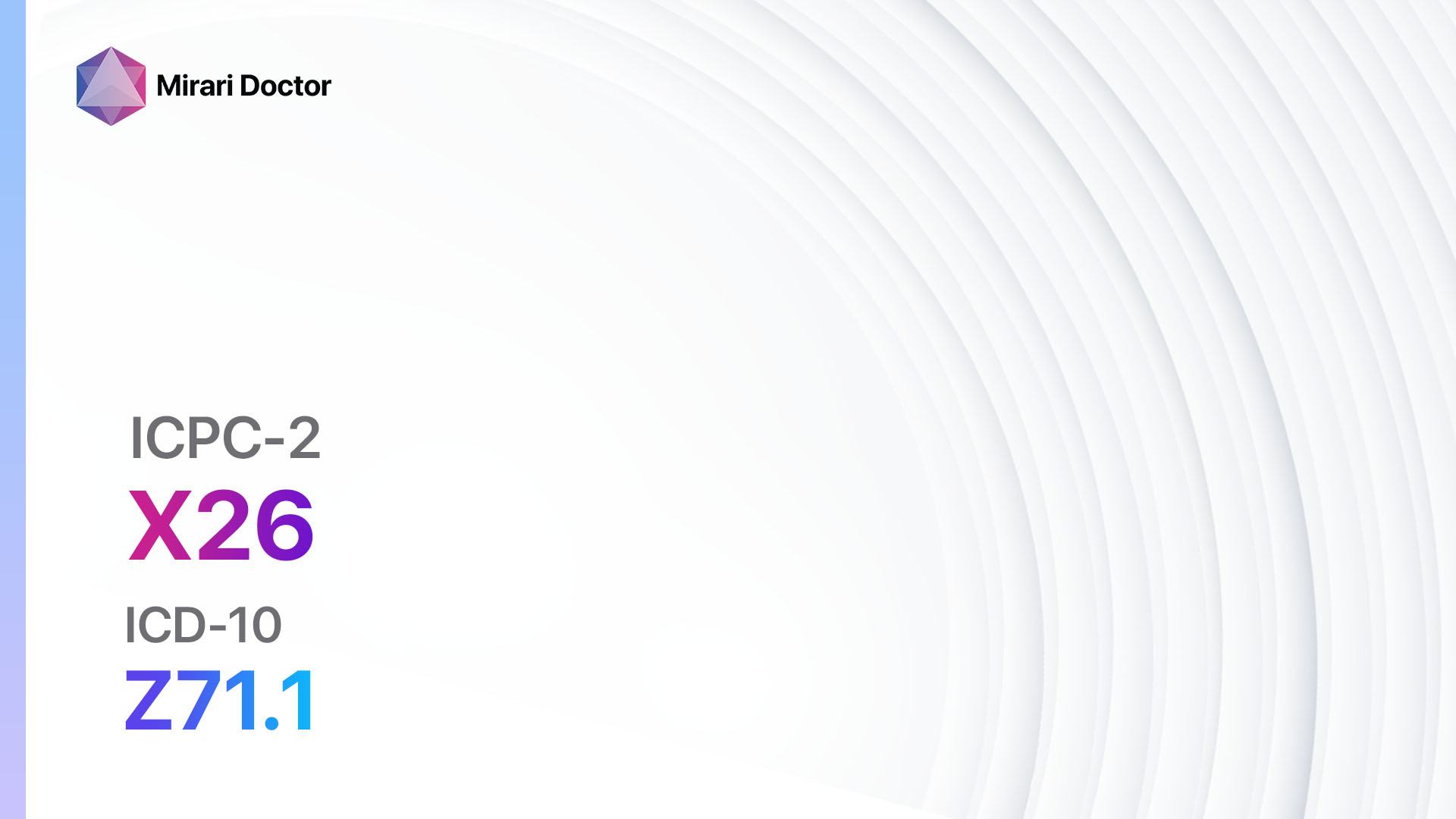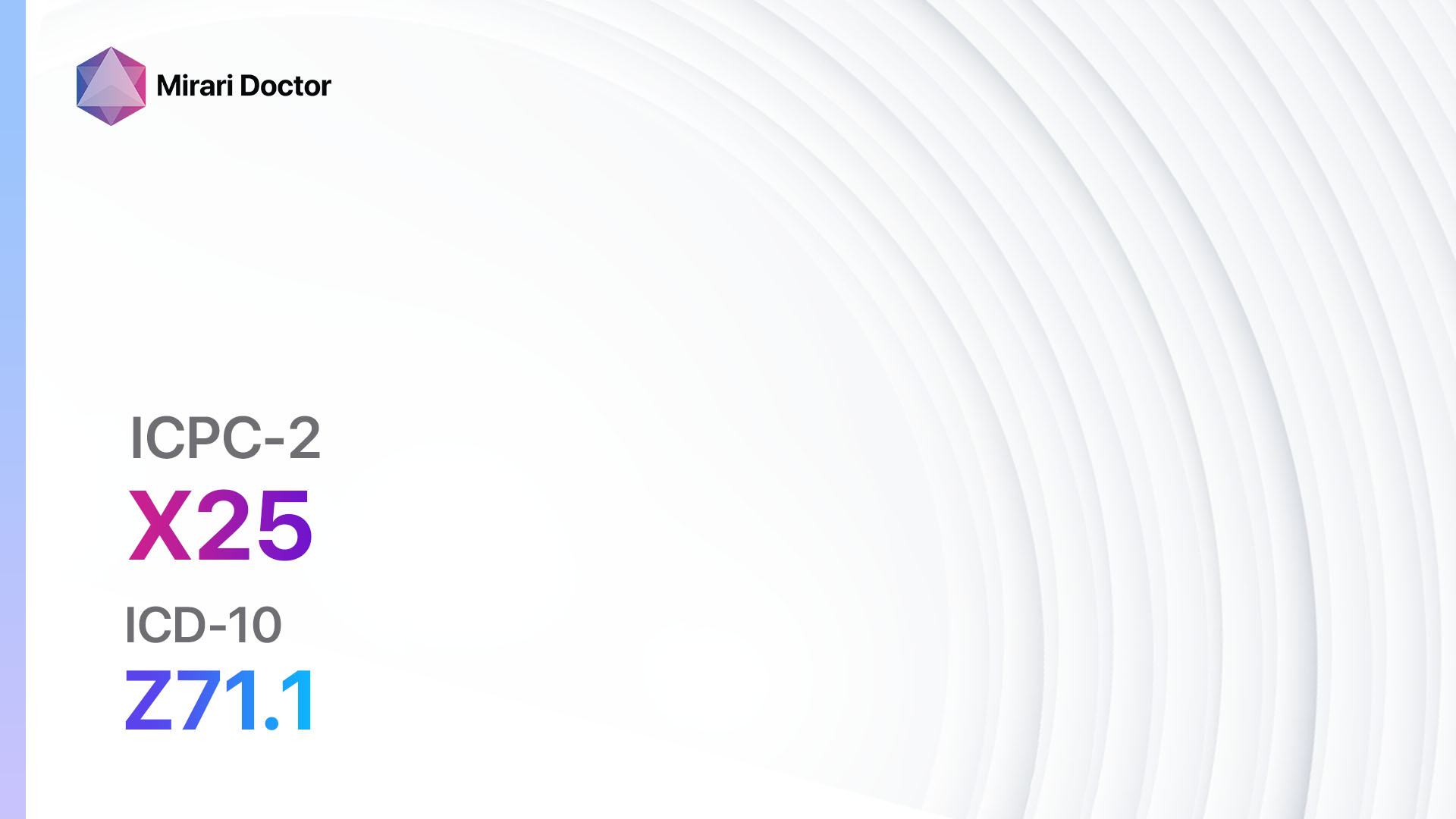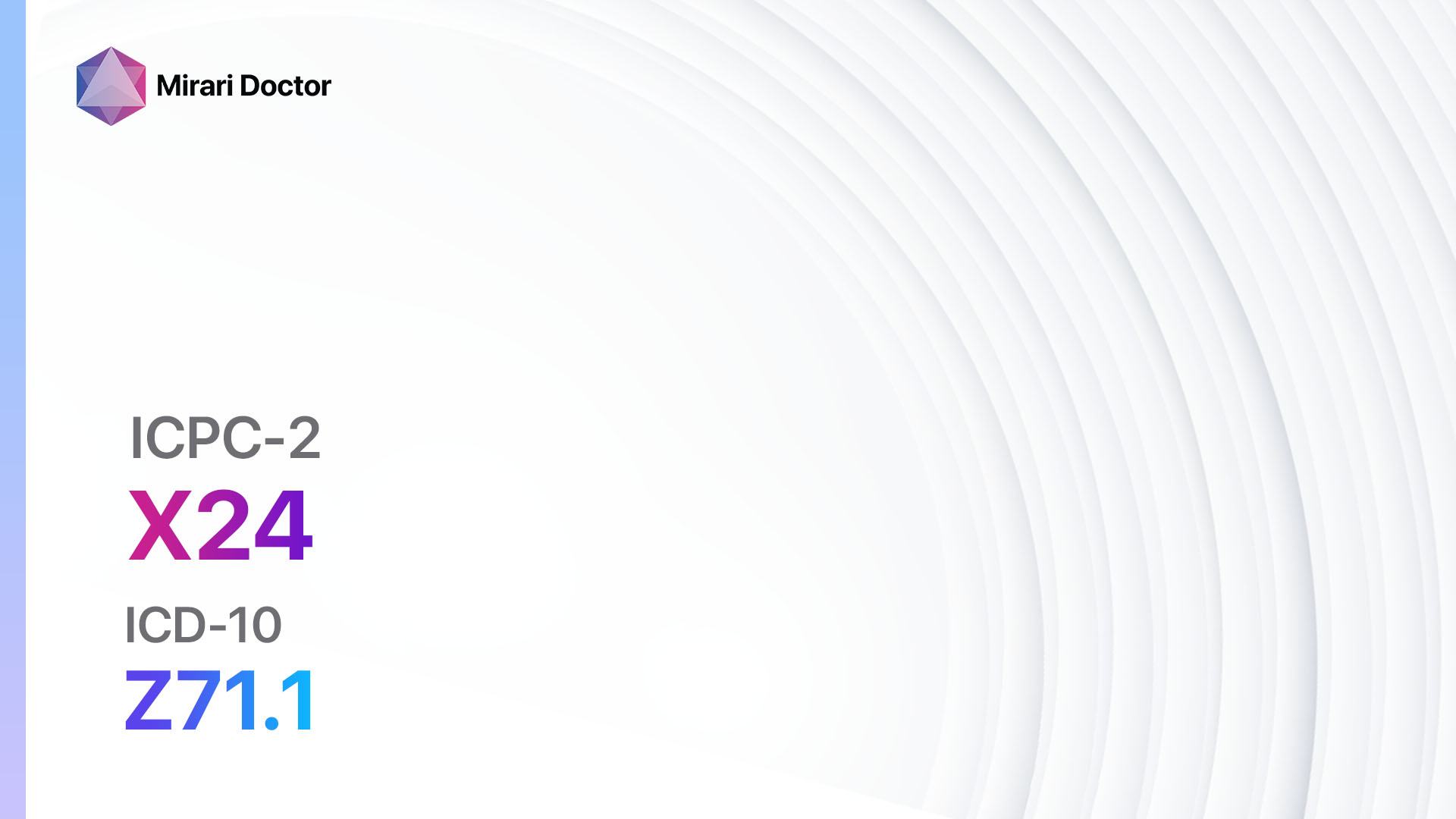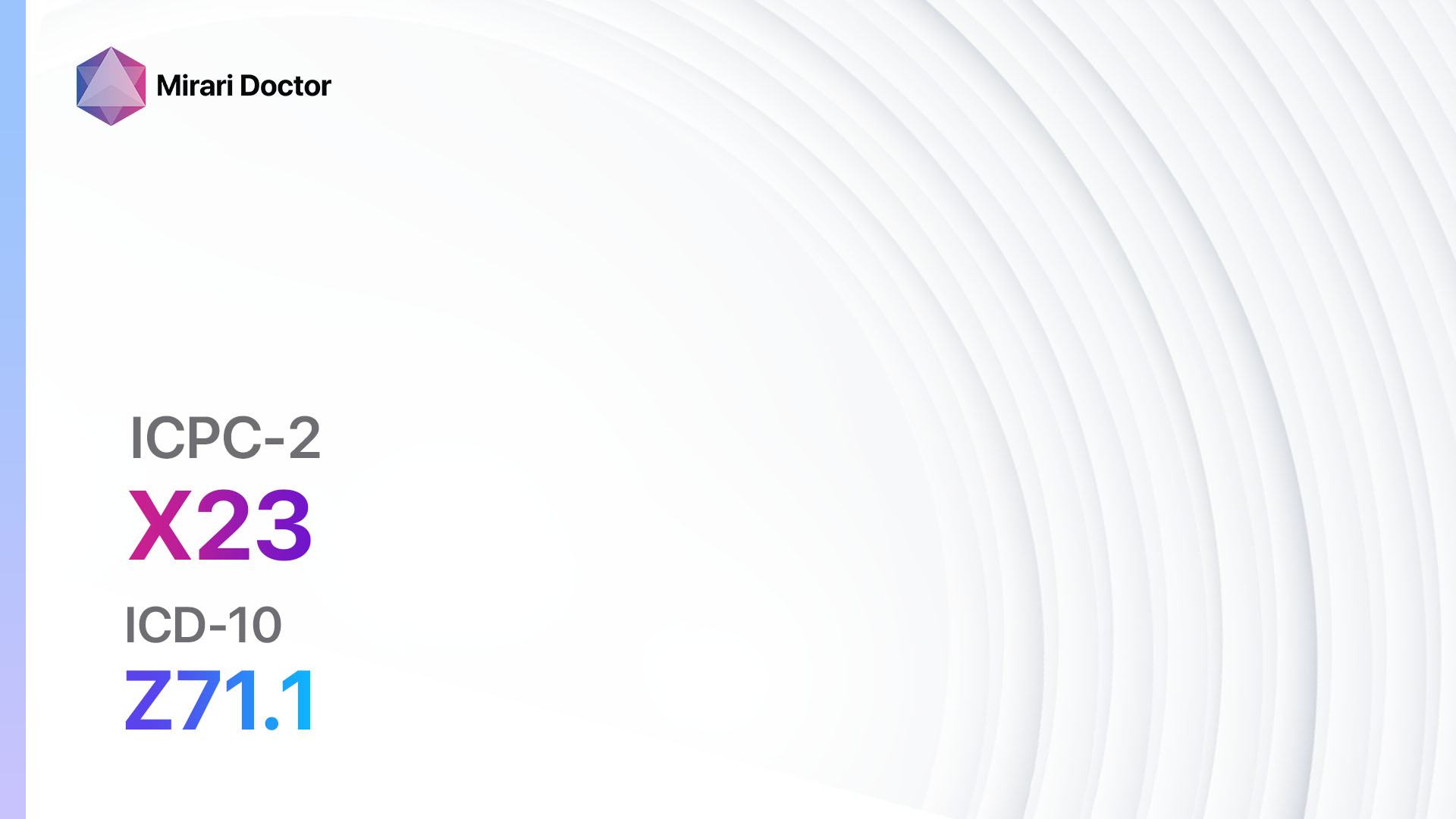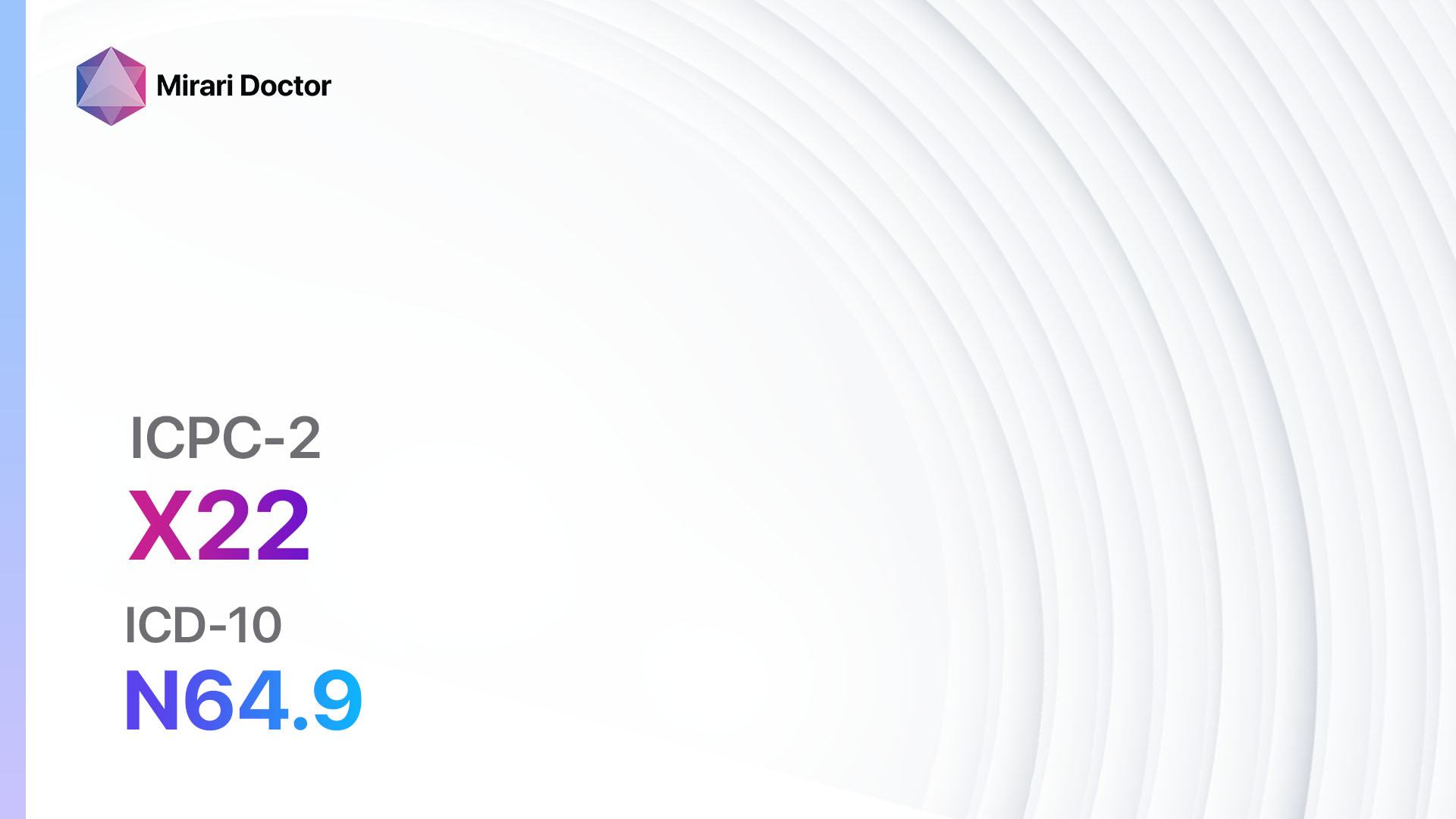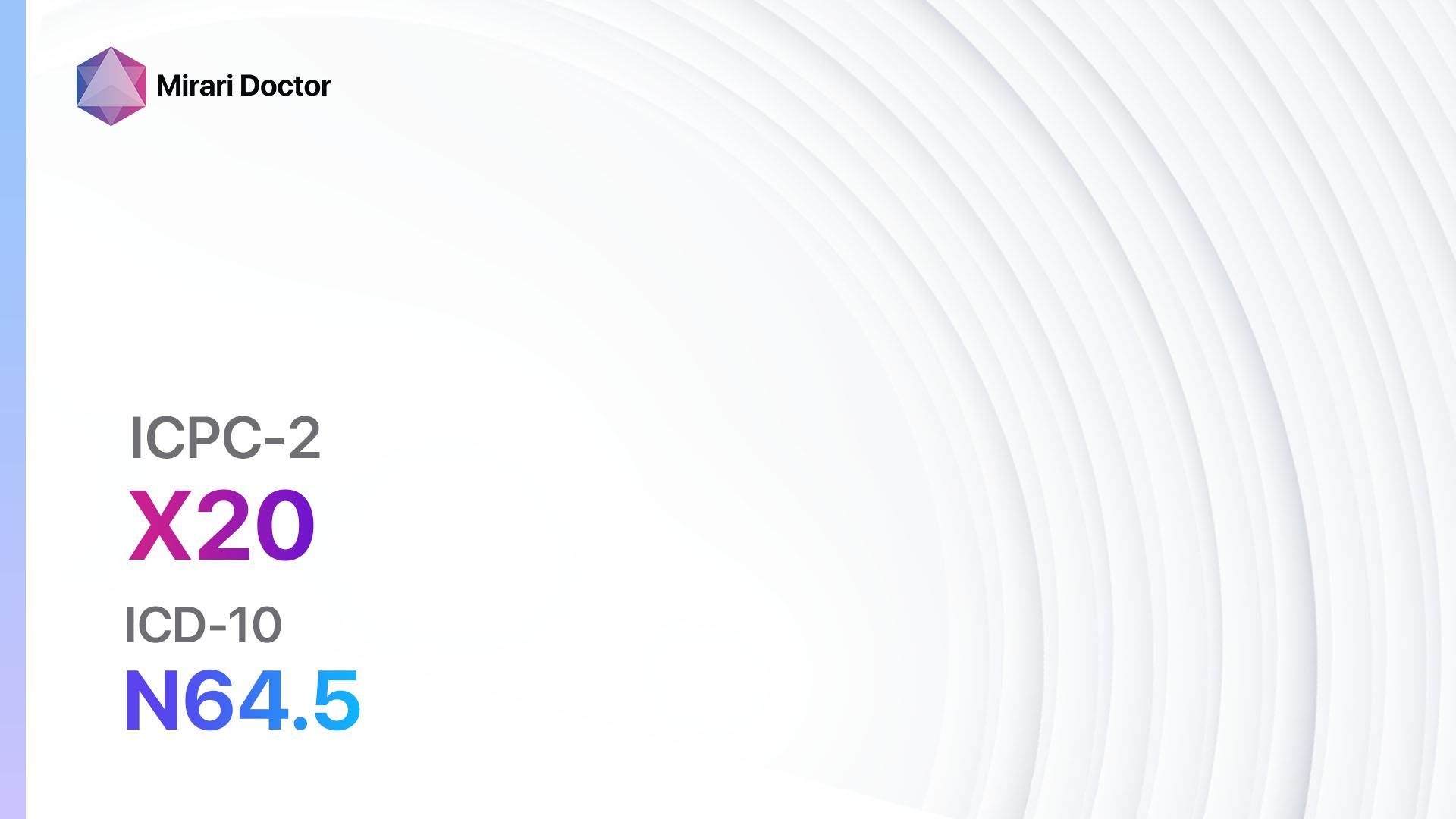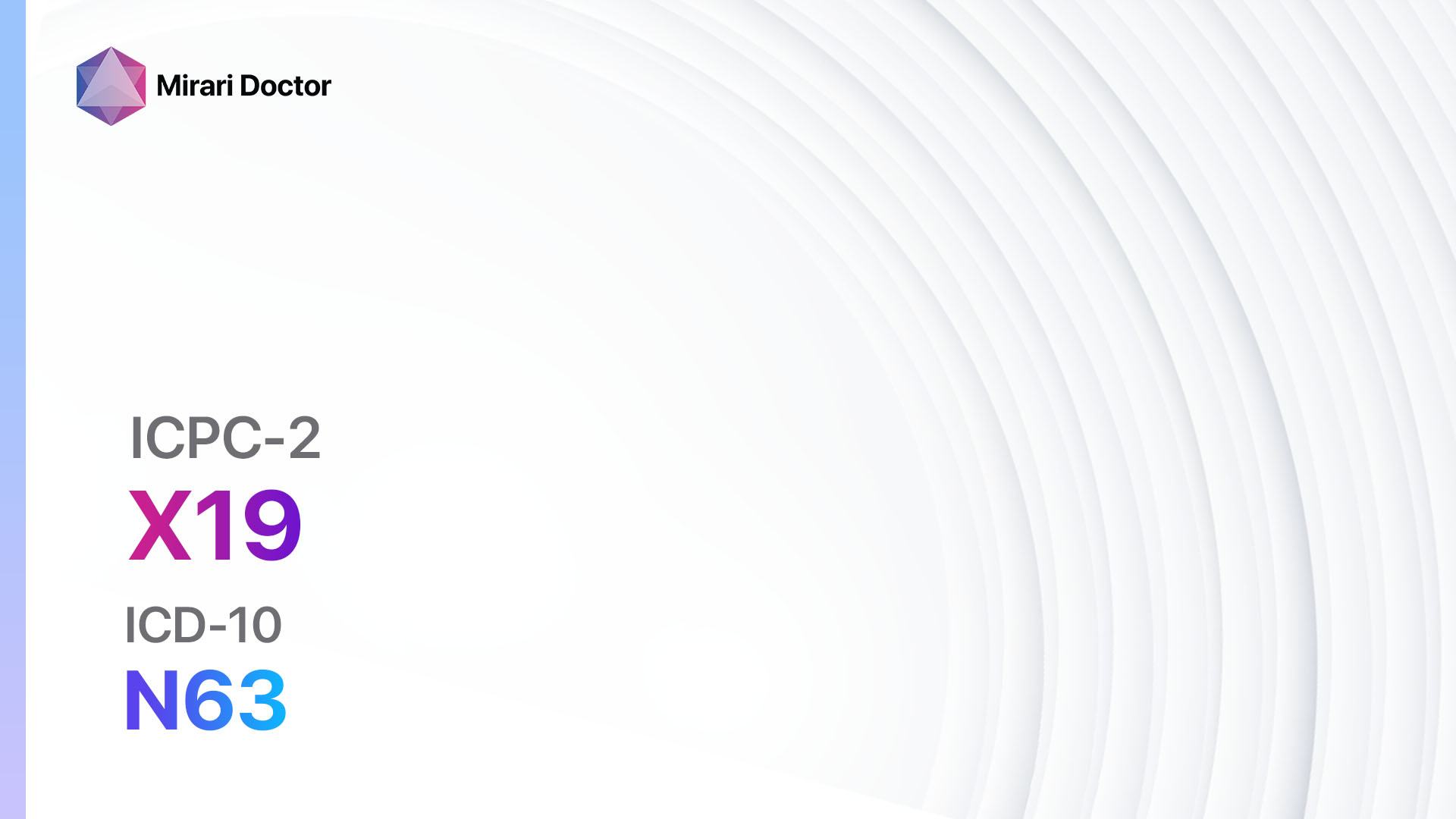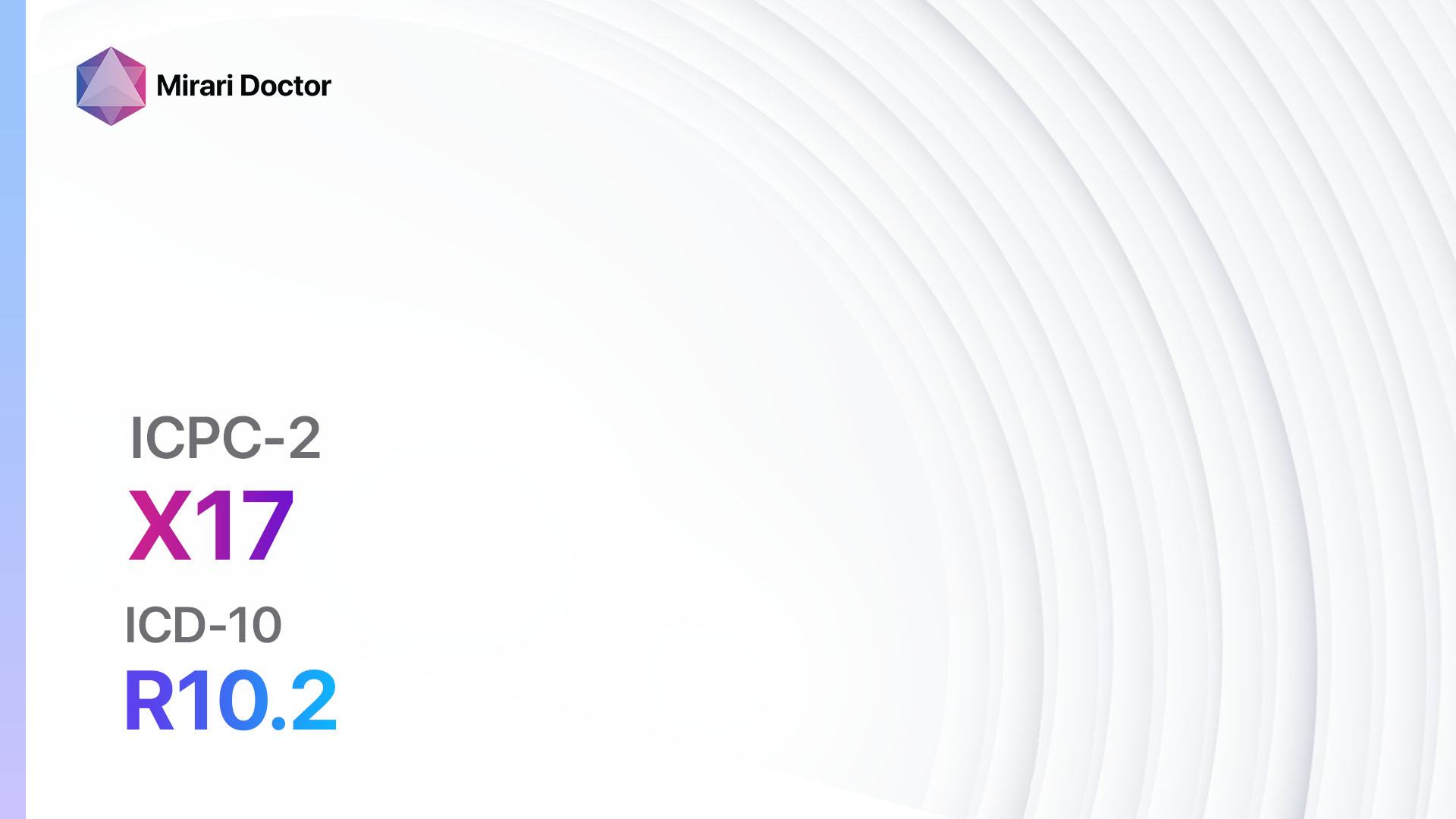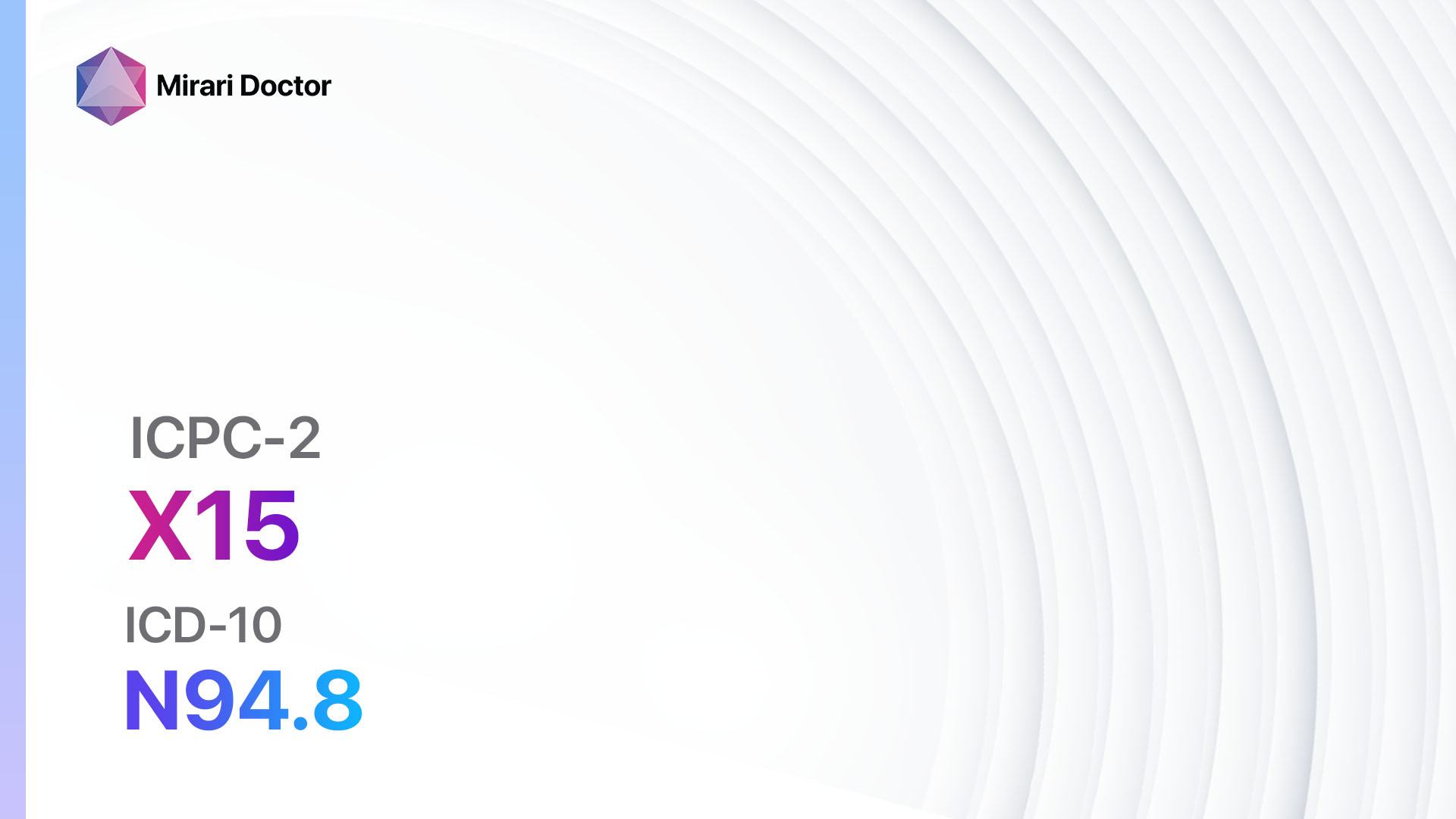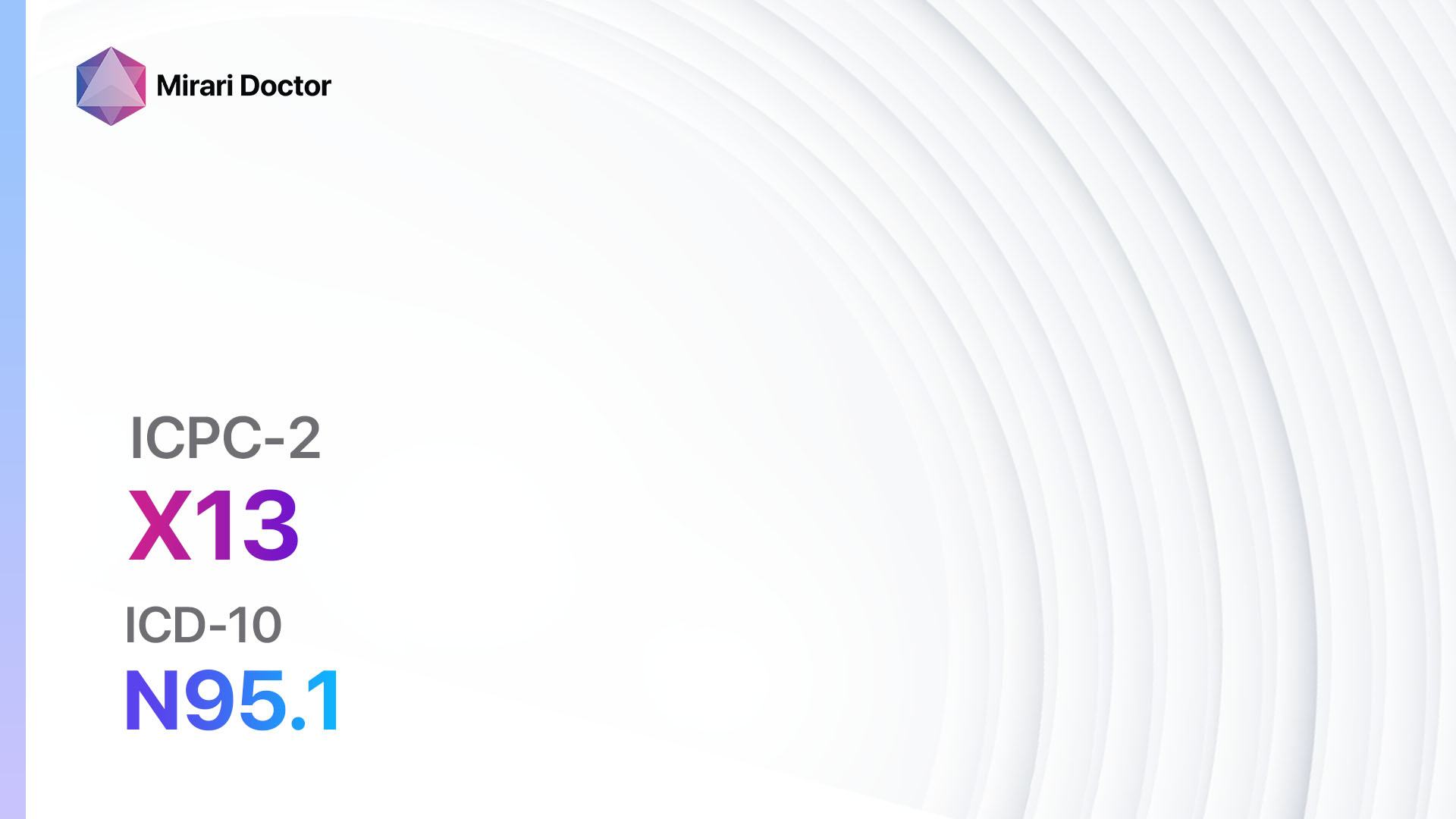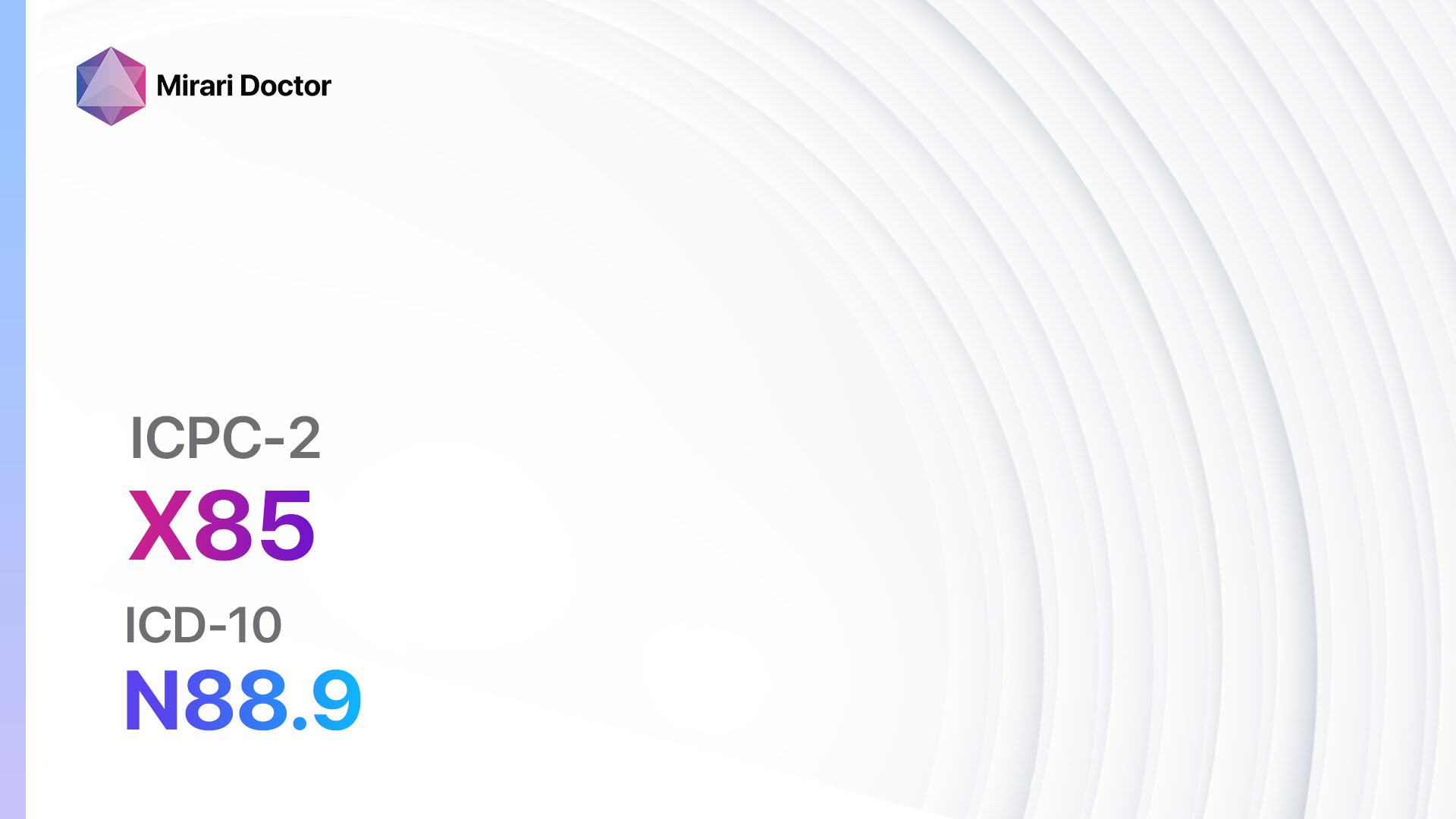
Introduction
Cervical disease NOS refers to a non-specific diagnosis of cervical disease that does not fit into any specific category. It is important to properly diagnose and manage this condition to prevent complications and ensure optimal patient outcomes. This guide aims to provide healthcare professionals with a comprehensive approach to diagnosing and managing cervical disease NOS.
Codes
- ICPC-2 Code: X85 Cervical disease NOS[1]
- ICD-10 Code: N88.9 Noninflammatory disorder of cervix uteri, unspecified[2]
Symptoms
- Abnormal vaginal bleeding: This may include spotting between periods, heavy or prolonged menstrual bleeding, or bleeding after sexual intercourse.[3]
- Pelvic pain: Patients may experience pain in the lower abdomen or pelvis, which can range from milaad to severe.[4]
- Vaginal discharge: An abnormal discharge that may be watery, bloody, or have a foul odor.[3]
- Pain during sexual intercourse: Some patients may experience pain or discomfort during intercourse.[5]
- Changes in menstrual cycle: Irregular periods or changes in the length or heaviness of menstrual bleeding.[3]
Causes
- Infection: Cervical infections, such as bacterial vaginosis or sexually transmitted infections, can cause inflammation and lead to cervical disease.[6]
- Hormonal imbalances: Fluctuations in hormone levels, such as those seen during pregnancy or menopause, can contribute to the development of cervical disease.[7]
- Cervical trauma: Previous cervical procedures or trauma to the cervix can increase the risk of developing cervical disease.[8]
- Chronic inflammation: Conditions such as chronic cervicitis or chronic pelvic inflammatory disease can lead to cervical disease.[9]
Diagnostic Steps
Medical History
- Gather information about the patient’s risk factors, such as sexual history, contraceptive use, and previous cervical procedures[10].
- Ask about any symptoms the patient is experiencing, including abnormal vaginal bleeding, pelvic pain, or changes in menstrual cycle[11].
- Inquire about any relevant medical conditions, such as hormonal imbalances or chronic infections[12].
Physical Examination
- Perform a pelvic examination to assess the cervix for any abnormalities, such as lesions, inflammation, or discharge[13].
- Palpate the abdomen to check for any tenderness or masses that may be indicative of cervical disease[14].
- Conduct a speculum examination to visualize the cervix and collect samples for further testing, such as a Pap smear or cervical biopsy[15].
Laboratory Tests
- Pap smear: A screening test to detect abnormal cells on the cervix that may indicate cervical disease[16].
- HPV testing: A test to detect the presence of high-risk strains of the human papillomavirus, which can increase the risk of cervical disease[17].
- Cultures: Collect samples for bacterial or viral cultures to identify any infections that may be contributing to cervical disease[18].
Diagnostic Imaging
- Transvaginal ultrasound: This imaging modality can provide detailed images of the cervix and surrounding structures to assess for any abnormalities[19].
- Magnetic resonance imaging (MRI): In some cases, an MRI may be ordered to further evaluate the extent of cervical disease or to assess for any spread to nearby structures[20].
Other Tests
- Colposcopy: A procedure in which a colposcope is used to examine the cervix in more detail and collect biopsies if necessary[21].
- Endocervical curettage: A procedure to collect samples from the endocervical canal for further evaluation[22].
- Cone biopsy: A surgical procedure to remove a cone-shaped piece of tissue from the cervix for examination[23].
Follow-up and Patient Education
- Schedule regular follow-up appointments to monitor the progression of cervical disease and assess the effectiveness of treatment[24].
- Provide education to the patient about the importance of regular screenings, such as Pap smears, to detect cervical disease early[25].
- Discuss the potential complications of untreated cervical disease, such as infertility or the development of cervical cancer[26].
Possible Interventions
Traditional Interventions
Medications:
Top 5 drugs for Cervical disease NOS:
- Antibiotics(e.g., Azithromycin, Doxycycline)[27]:
- Cost: Generic versions can be $3-$50/month.
- Contraindications: Allergy to antibiotics, liver disease.
- Side effects: Nausea, diarrhea, rash.
- Severe side effects: Severe allergic reactions, liver toxicity.
- Drug interactions: Warfarin, oral contraceptives.
- Warning: Finish the full course of antibiotics as prescribed.
- Nonsteroidal anti-inflammatory drugs (NSAIDs)(e.g., Ibuprofen, Naproxen)[28]:
- Cost: Generic versions are typically <$10/month.
- Contraindications: Active peptic ulcer disease, history of gastrointestinal bleeding.
- Side effects: Upset stomach, heartburn, dizziness.
- Severe side effects: Gastrointestinal bleeding, kidney problems.
- Drug interactions: Aspirin, anticoagulants.
- Warning: Take with food to reduce the risk of stomach upset.
- Hormonal therapy(e.g., Oral contraceptives, Hormone replacement therapy)[29]:
- Cost: Varies depending on the specific medication and insurance coverage.
- Contraindications: History of blood clots, liver disease.
- Side effects: Nausea, breast tenderness, mood changes.
- Severe side effects: Blood clots, stroke, heart attack.
- Drug interactions: Antibiotics, anticonvulsants.
- Warning: Discuss the risks and benefits with the patient before initiating hormonal therapy.
- Antiviral medications(e.g., Acyclovir, Valacyclovir)[30]:
- Cost: Generic versions can be $10-$50/month.
- Contraindications: Allergy to antiviral medications, kidney disease.
- Side effects: Nausea, headache, dizziness.
- Severe side effects: Allergic reactions, kidney damage.
- Drug interactions: Probenecid, other antiviral medications.
- Warning: Take as prescribed and complete the full course of treatment.
- Immunomodulators(e.g., Imiquimod)[31]:
- Cost: $100-$500/month.
- Contraindications: Allergy to immunomodulators, autoimmune disorders.
- Side effects: Local skin reactions, flu-like symptoms.
- Severe side effects: Severe skin reactions, allergic reactions.
- Drug interactions: None reported.
- Warning: Use with caution in patients with compromised immune systems.
Alternative Drugs:
- Topical corticosteroids: May be used to reduce inflammation and relieve symptoms[32].
- Antifungal medications: If a fungal infection is suspected, antifungal medications may be prescribed[33].
- Antidepressants: In some cases, antidepressant medications may be used to manage chronic pain associated with cervical disease[34].
- Immunosuppressants: For patients with autoimmune-related cervical disease, immunosuppressant medications may be considered[35].
Surgical Procedures:
- Cervical conization: A surgical procedure to remove a cone-shaped piece of tissue from the cervix for further examination[36].
- Cost: $5,000-$10,000.
- Cryosurgery: Freezing abnormal cervical tissue to destroy it[37].
- Cost: $2,000-$5,000.
- Laser surgery: Using a laser to remove or destroy abnormal cervical tissue[38].
- Cost: $3,000-$8,000.
- Loop electrosurgical excision procedure (LEEP): Using a thin wire loop heated by an electrical current to remove abnormal cervical tissue[39].
- Cost: $3,000-$7,000.
- Hysterectomy: In severe cases or when other treatments have failed, a hysterectomy may be recommended to remove the cervix and uterus[40].
- Cost: $10,000-$20,000.
Alternative Interventions
- Acupuncture: May help relieve pain and promote relaxation[41].
- Cost: $60-$120 per session.
- Herbal supplements: Some herbal supplements, such as green tea extract or curcumin, may have anti-inflammatory properties[42].
- Cost: Varies depending on the specific supplement.
- Mind-body techniques: Techniques such as meditation, yoga, or tai chi may help reduce stress and improve overall well-being[43].
- Cost: Varies depending on the specific practice and location.
- Dietary modifications: Encourage a healthy diet rich in fruits, vegetables, and whole grains to support overall health and immune function[44].
- Cost: Varies depending on individual food choices.
- Physical therapy: Pelvic floor physical therapy may be beneficial for patients with pelvic pain or muscle dysfunction[45].
- Cost: $100-$200 per session.
Lifestyle Interventions
- Smoking cessation: Smoking has been linked to an increased risk of cervical disease. Encourage patients to quit smoking to improve overall health and reduce disease progression[46].
- Cost: Varies depending on the specific smoking cessation program or aids.
- Healthy weight management: Maintaining a healthy weight through diet and exercise can help reduce the risk of cervical disease and improve overall health[47].
- Cost: Varies depending on individual food choices and gym memberships.
- Safe sexual practices: Encourage the use of barrier methods, such as condoms, to reduce the risk of sexually transmitted infections that can contribute to cervical disease[48].
- Cost: Varies depending on the cost of barrier methods.
- Stress management: Chronic stress can negatively impact immune function and increase the risk of disease progression. Encourage stress management techniques, such as mindfulness or relaxation exercises[49].
- Cost: Varies depending on the specific stress management technique.
It is important to note that the cost ranges provided are approximate and may vary depending on the location and availability of the interventions. Healthcare professionals should consider the individual patient’s needs, preferences, and financial situation when recommending interventions for cervical disease NOS.
Mirari Cold Plasma Alternative Intervention
Understanding Mirari Cold Plasma
- Safe and Non-Invasive Treatment: Mirari Cold Plasma is a safe and non-invasive treatment option for various skin conditions. It does not require incisions, minimizing the risk of scarring, bleeding, or tissue damage.
- Efficient Extraction of Foreign Bodies: Mirari Cold Plasma facilitates the removal of foreign bodies from the skin by degrading and dissociating organic matter, allowing easier access and extraction.
- Pain Reduction and Comfort: Mirari Cold Plasma has a local analgesic effect, providing pain relief during the treatment, making it more comfortable for the patient.
- Reduced Risk of Infection: Mirari Cold Plasma has antimicrobial properties, effectively killing bacteria and reducing the risk of infection.
- Accelerated Healing and Minimal Scarring: Mirari Cold Plasma stimulates wound healing and tissue regeneration, reducing healing time and minimizing the formation of scars.
Mirari Cold Plasma Prescription
Video instructions for using Mirari Cold Plasma Device – X85 Cervical disease NOS (ICD-10:N88.9)
| Mild | Moderate | Severe |
| Mode setting: 1 (Infection) Location: 0 (Localized) Morning: 15 minutes, Evening: 15 minutes | Mode setting: 1 (Infection) Location: 0 (Localized) Morning: 30 minutes, Lunch: 30 minutes, Evening: 30 minutes | Mode setting: 1 (Infection) Location: 0 (Localized) Morning: 30 minutes, Lunch: 30 minutes, Evening: 30 minutes |
| Mode setting: 2 (Wound Healing) Location: 0 (Localized) Morning: 15 minutes, Evening: 15 minutes | Mode setting: 2 (Wound Healing) Location: 0 (Localized) Morning: 30 minutes, Lunch: 30 minutes, Evening: 30 minutes | Mode setting: 2 (Wound Healing) Location: 0 (Localized) Morning: 30 minutes, Lunch: 30 minutes, Evening: 30 minutes |
| Mode setting: 3 (Antiviral Therapy) Location: 0 (Localized) Morning: 15 minutes, Evening: 15 minutes | Mode setting: 3 (Antiviral Therapy) Location: 0 (Localized) Morning: 30 minutes, Lunch: 30 minutes, Evening: 30 minutes | Mode setting: 3 (Antiviral Therapy) Location: 0 (Localized) Morning: 30 minutes, Lunch: 30 minutes, Evening: 30 minutes |
| Mode setting: 7 (Immunotherapy) Location: 1 (Sacrum) Morning: 15 minutes, Evening: 15 minutes | Mode setting: 7 (Immunotherapy) Location: 1 (Sacrum) Morning: 30 minutes, Lunch: 30 minutes, Evening: 30 minutes | Mode setting: 7 (Immunotherapy) Location: 1 (Sacrum) Morning: 30 minutes, Lunch: 30 minutes, Evening: 30 minutes |
| Total Morning: 60 minutes approx. $10 USD, Evening: 60 minutes approx. $10 USD | Total Morning: 120 minutes approx. $20 USD, Lunch: 120 minutes approx. $20 USD, Evening: 120 minutes approx. $20 USD, | Total Morning: 120 minutes approx. $20 USD, Lunch: 120 minutes approx. $20 USD, Evening: 120 minutes approx. $20 USD, |
| Usual treatment for 7-60 days approx. $140 USD – $1200 USD | Usual treatment for 6-8 weeks approx. $2,520USD – $3,360 USD | Usual treatment for 3-6 months approx. $5,400 USD – $10,800 USD |
 |
|
Use the Mirari Cold Plasma device to treat Cervical disease NOS effectively.
WARNING: MIRARI COLD PLASMA IS DESIGNED FOR THE HUMAN BODY WITHOUT ANY ARTIFICIAL OR THIRD PARTY PRODUCTS. USE OF OTHER PRODUCTS IN COMBINATION WITH MIRARI COLD PLASMA MAY CAUSE UNPREDICTABLE EFFECTS, HARM OR INJURY. PLEASE CONSULT A MEDICAL PROFESSIONAL BEFORE COMBINING ANY OTHER PRODUCTS WITH USE OF MIRARI.
Step 1: Cleanse the Skin
- Start by cleaning the affected area of the skin with a gentle cleanser or mild soap and water. Gently pat the area dry with a clean towel.
Step 2: Prepare the Mirari Cold Plasma device
- Ensure that the Mirari Cold Plasma device is fully charged or has fresh batteries as per the manufacturer’s instructions. Make sure the device is clean and in good working condition.
- Switch on the Mirari device using the power button or by following the specific instructions provided with the device.
- Some Mirari devices may have adjustable settings for intensity or treatment duration. Follow the manufacturer’s instructions to select the appropriate settings based on your needs and the recommended guidelines.
Step 3: Apply the Device
- Place the Mirari device in direct contact with the affected area of the skin. Gently glide or hold the device over the skin surface, ensuring even coverage of the area experiencing.
- Slowly move the Mirari device in a circular motion or follow a specific pattern as indicated in the user manual. This helps ensure thorough treatment coverage.
Step 4: Monitor and Assess:
- Keep track of your progress and evaluate the effectiveness of the Mirari device in managing your Cervical disease NOS. If you have any concerns or notice any adverse reactions, consult with your health care professional.
Note
This guide is for informational purposes only and should not replace the advice of a medical professional. Always consult with your healthcare provider or a qualified medical professional for personal advice, diagnosis, or treatment. Do not solely rely on the information presented here for decisions about your health. Use of this information is at your own risk. The authors of this guide, nor any associated entities or platforms, are not responsible for any potential adverse effects or outcomes based on the content.
Mirari Cold Plasma System Disclaimer
- Purpose: The Mirari Cold Plasma System is a Class 2 medical device designed for use by trained healthcare professionals. It is registered for use in Thailand and Vietnam. It is not intended for use outside of these locations.
- Informational Use: The content and information provided with the device are for educational and informational purposes only. They are not a substitute for professional medical advice or care.
- Variable Outcomes: While the device is approved for specific uses, individual outcomes can differ. We do not assert or guarantee specific medical outcomes.
- Consultation: Prior to utilizing the device or making decisions based on its content, it is essential to consult with a Certified Mirari Tele-Therapist and your medical healthcare provider regarding specific protocols.
- Liability: By using this device, users are acknowledging and accepting all potential risks. Neither the manufacturer nor the distributor will be held accountable for any adverse reactions, injuries, or damages stemming from its use.
- Geographical Availability: This device has received approval for designated purposes by the Thai and Vietnam FDA. As of now, outside of Thailand and Vietnam, the Mirari Cold Plasma System is not available for purchase or use.
References
- World Health Organization. (2020). International Classification of Primary Care, Second edition (ICPC-2). //www.who.int/standards/classifications/other-classifications/international-classification-of-primary-care
- World Health Organization. (2019). International Statistical Classification of Diseases and Related Health Problems (ICD-10). //icd.who.int/browse10/2019/en#/N88.9
- Casey, P. M., Long, M. E., & Marnach, M. L. (2011). Abnormal cervical appearance: What to do, when to worry? Mayo Clinic Proceedings, 86(2), 147-151. //doi.org/10.4065/mcp.2010.0512
- Latthe, P., Latthe, M., Say, L., Gülmezoglu, M., & Khan, K. S. (2006). WHO systematic review of prevalence of chronic pelvic pain: a neglected reproductive health morbidity. BMC Public Health, 6, 177. //doi.org/10.1186/1471-2458-6-177
- Heim, L. J. (2001). Evaluation and differential diagnosis of dyspareunia. American Family Physician, 63(8), 1535-1544. //www.aafp.org/afp/2001/0415/p1535.html
- Workowski, K. A., & Bolan, G. A. (2015). Sexually transmitted diseases treatment guidelines, 2015. MMWR Recommendations and Reports, 64(RR-03), 1-137. //www.cdc.gov/mmwr/preview/mmwrhtml/rr6403a1.htm
- Bornstein, J., Bentley, J., Bösze, P., Girardi, F., Haefner, H., Menton, M., Perrotta, M., Prendiville, W., Russell, P., Sideri, M., Strander, B., Tatti, S., Torne, A., & Walker, P. (2012). 2011 colposcopic terminology of the International Federation for Cervical Pathology and Colposcopy. Obstetrics & Gynecology, 120(1), 166-172. //doi.org/10.1097/AOG.0b013e318254f90c
- Kyrgiou, M., Athanasiou, A., Kalliala, I. E. J., Paraskevaidi, M., Mitra, A., Martin-Hirsch, P. P., Arbyn, M., Bennett, P., & Paraskevaidis, E. (2017). Obstetric outcomes after conservative treatment for cervical intraepithelial lesions and early invasive disease. Cochrane Database of Systematic Reviews, 11(11), CD012847. //doi.org/10.1002/14651858.CD012847
- Brunham, R. C., Gottlieb, S. L., & Paavonen, J. (2015). Pelvic inflammatory disease. New England Journal of Medicine, 372(21), 2039-2048. //doi.org/10.1056/NEJMra1411426
- Saslow, D., Solomon, D., Lawson, H. W., Killackey, M., Kulasingam, S. L., Cain, J., … & Myers, E. R. (2012). American Cancer Society, American Society for Colposcopy and Cervical Pathology, and American Society for Clinical Pathology screening guidelines for the prevention and early detection of cervical cancer. CA: a cancer journal for clinicians, 62(3), 147-172. //doi.org/10.3322/caac.21139
- Critchlow, C. W., Wolner-Hanssen, P., Eschenbach, D. A., Kiviat, N. B., Koutsky, L. A., Stevens, C. E., & Holmes, K. K. (1995). Determinants of cervical ectopia and of cervicitis: age, oral contraception, specific cervical infection, smoking, and douching. American journal of obstetrics and gynecology, 173(2), 534-543. //doi.org/10.1016/0002-9378(95)90279-1
- Aparicio-Ruiz, B., Basile, N., Pérez Albalá, S., Bronet, F., Remohí, J., & Meseguer, M. (2016). Automatic time-lapse instrument is superior to single-point morphology observation for selecting viable embryos: A retrospective study in oocyte donation. Fertility and Sterility, 106(4), 934-939. //doi.org/10.1016/j.fertnstert.2016.07.1117
- Ferenczy, A., & Wright, T. C. (1994). Anatomy and histology of the cervix. In Blaustein’s pathology of the female genital tract (pp. 185-201). Springer, New York, NY. //doi.org/10.1007/978-1-4757-3889-6_6
- Bates, C. K., Carroll, N., & Potter, J. (2011). The challenging pelvic examination. Journal of general internal medicine, 26(6), 651-657. //doi.org/10.1007/s11606-010-1610-8
- Huh, W. K., Ault, K. A., Chelmow, D., Davey, D. D., Goulart, R. A., Garcia, F. A., … & Einstein, M. H. (2015). Use of primary high-risk human papillomavirus testing for cervical cancer screening: interim clinical guidance. Gynecologic oncology, 136(2), 178-182. //doi.org/10.1016/j.ygyno.2014.12.022
- Nayar, R., & Wilbur, D. C. (2015). The pap test and Bethesda 2014. Cancer cytopathology, 123(5), 271-281. //doi.org/10.1002/cncy.21521
- Arbyn, M., Snijders, P. J., Meijer, C. J., Berkhof, J., Cuschieri, K., Kocjan, B. J., & Poljak, M. (2015). Which high-risk HPV assays fulfil criteria for use in primary cervical cancer screening?. Clinical microbiology and infection, 21(9), 817-826. //doi.org/10.1016/j.cmi.2015.04.015
- Smith, J. S., Bosetti, C., Muñoz, N., Herrero, R., Bosch, F. X., Eluf-Neto, J., … & Franceschi, S. (2004). Chlamydia trachomatis and invasive cervical cancer: a pooled analysis of the IARC multicentric case-control study. International journal of cancer, 111(3), 431-439. //doi.org/10.1002/ijc.20257
- Testa, A. C., Di Legge, A., De Blasis, I., Moruzzi, M. C., Bonatti, M., Collarino, A., & Scambia, G. (2014). Imaging techniques for the evaluation of cervical cancer. Best Practice & Research Clinical Obstetrics & Gynaecology, 28(5), 741-768. //doi.org/10.1016/j.bpobgyn.2014.04.009
- Balleyguier, C., Sala, E., Da Cunha, T., Bergman, A., Brkljacic, B., Danza, F., … & Kinkel, K. (2011). Staging of uterine cervical cancer with MRI: guidelines of the European Society of Urogenital Radiology. European radiology, 21(5), 1102-1110. //doi.org/10.1007/s00330-010-1998-x
- Massad, L. S., Einstein, M. H., Huh, W. K., Katki, H. A., Kinney, W. K., Schiffman, M., … & Lawson, H. W. (2013). 2012 updated consensus guidelines for the management of abnormal cervical cancer screening tests and cancer precursors. Journal of lower genital tract disease, 17, S1-S27. //doi.org/10.1097/LGT.0b013e318287d329
- Gage, J. C., Hanson, V. W., Abbey, K., Dippery, S., Gardner, S., Kubota, J., … & Schiffman, M. (2006). Number of cervical biopsies and sensitivity of colposcopy. Obstetrics & Gynecology, 108(2), 264-272. //doi.org/10.1097/01.AOG.0000220505.18525.85
- Martin-Hirsch, P. P., Paraskevaidis, E., Bryant, A., Dickinson, H. O., & Keep, S. L. (2010). Surgery for cervical intraepithelial neoplasia. Cochrane database of systematic reviews, (6). //doi.org/10.1002/14651858.CD001318.pub2
- Koutsky, L. A., Holmes, K. K., Critchlow, C. W., Stevens, C. E., Paavonen, J., Beckmann, A. M., … & Kiviat, N. B. (1992). A cohort study of the risk of cervical intraepithelial neoplasia grade 2 or 3 in relation to papillomavirus infection. New England Journal of Medicine, 327(18), 1272-1278. //doi.org/10.1056/NEJM199210293271804
- Melnikow, J., Henderson, J. T., Burda, B. U., Senger, C. A., Durbin, S., & Weyrich, M. S. (2018). Screening for cervical cancer with high-risk human papillomavirus testing: updated evidence report and systematic review for the US Preventive Services Task Force. Jama, 320(7), 687-705. //doi.org/10.1001/jama.2018.10400
- Kyrgiou, M., Koliopoulos, G., Martin-Hirsch, P., Arbyn, M., Prendiville, W., & Paraskevaidis, E. (2006). Obstetric outcomes after conservative treatment for intraepithelial or early invasive cervical lesions: systematic review and meta-analysis. The Lancet, 367(9509), 489-498. //doi.org/10.1016/S0140-6736(06)68181-6
- Workowski, K. A., & Bolan, G. A. (2015). Sexually transmitted diseases treatment guidelines, 2015. MMWR Recommendations and Reports, 64(RR-03), 1-137. //www.cdc.gov/mmwr/preview/mmwrhtml/rr6403a1.htm
- Crofford, L. J. (2013). Use of NSAIDs in treating patients with arthritis. Arthritis Research & Therapy, 15(Suppl 3), S2. //doi.org/10.1186/ar4174
- Schindler, A. E. (2013). Non-contraceptive benefits of oral hormonal contraceptives. International Journal of Endocrinology and Metabolism, 11(1), 41-47. //doi.org/10.5812/ijem.4158
- Workowski, K. A., & Bolan, G. A. (2015). Sexually transmitted diseases treatment guidelines, 2015. MMWR Recommendations and Reports, 64(RR-03), 1-137. //www.cdc.gov/mmwr/preview/mmwrhtml/rr6403a1.htm
- Terlou, A., van Seters, M., Kleinjan, A., Heijmans-Antonissen, C., Santegoets, L. A., Beckmann, I., … & Helmerhorst, T. J. (2011). Imiquimod-induced clearance of HPV is associated with normalization of immune cell counts in usual type vulvar intraepithelial neoplasia. International Journal of Cancer, 127(12), 2831-2840. //doi.org/10.1002/ijc.25302
- Dattner, A. M. (2003). From medical herbalism to phytotherapy in dermatology: Back to the future. Journal of the American Academy of Dermatology, 49(4), 543-551. //doi.org/10.1046/j.1529-8019.2003.01618.x
- Sobel, J. D. (2007). Vulvovaginal candidosis. The Lancet, 369(9577), 1961-1971. //doi.org/10.1016/S0140-6736(07)60917-9
- Sator-Katzenschlager, S. M., Scharbert, G., Kress, H. G., Frickey, N., Ellend, A., Gleiss, A., & Kozek-Langenecker, S. A. (2005). Chronic pelvic pain treated with gabapentin and amitriptyline: a randomized controlled pilot study. Wiener Klinische Wochenschrift, 117(21-22), 761-768. //doi.org/10.1007/s00508-005-0464-2
- Vosse, D., Landewé, R., Garnero, P., van der Heijde, D., van der Linden, S., & Geusens, P. (2008). Association of markers of bone- and cartilage-degradation with radiological changes at baseline and after 2 years follow-up in patients with ankylosing spondylitis. Rheumatology, 47(8), 1219-1222. //doi.org/10.1093/rheumatology/ken148
- Martin-Hirsch, P. P., Paraskevaidis, E., Bryant, A., Dickinson, H. O., & Keep, S. L. (2010). Surgery for cervical intraepithelial neoplasia. Cochrane Database of Systematic Reviews, (6). //doi.org/10.1002/14651858.CD001318.pub2
- Luciani, S., Gonzales, M., Munoz, S., Jeronimo, J., & Robles, S. (2008). Effectiveness of cryotherapy treatment for cervical intraepithelial neoplasia. International Journal of Gynecology & Obstetrics, 101(2), 172-177. //doi.org/10.1016/j.ijgo.2007.11.013
- Fallani, M. G., Penna, C., Fambrini, M., & Marchionni, M. (2003). Laser CO2 vaporization for high-grade cervical intraepithelial neoplasia: a long-term follow-up series. Gynecologic Oncology, 91(1), 130-133. //doi.org/10.1016/S0090-8258(03)00440-2
- Jiang, Y. M., Chen, C. X., & Li, L. (2016). Meta-analysis of cold-knife conization versus loop electrosurgical excision procedure for cervical intraepithelial neoplasia. OncoTargets and Therapy, 9, 3907-3915. //doi.org/10.2147/OTT.S108832
- Wright, J. D., Herzog, T. J., Tsui, J., Ananth, C. V., Lewin, S. N., Lu, Y. S., … & Hershman, D. L. (2013). Nationwide trends in the performance of inpatient hysterectomy in the United States. Obstetrics and Gynecology, 122(2 Pt 1), 233-241. //doi.org/10.1097/AOG.0b013e318299a6cf
- Smith, C. A., Armour, M., Lee, M. S., Wang, L. Q., & Hay, P. J. (2018). Acupuncture for depression. Cochrane Database of Systematic Reviews, (3). //doi.org/10.1002/14651858.CD004046.pub4
- Ekor, M. (2014). The growing use of herbal medicines: issues relating to adverse reactions and challenges in monitoring safety. Frontiers in Pharmacology, 4, 177. //doi.org/10.3389/fphar.2013.00177
- Goyal, M., Singh, S., Sibinga, E. M., Gould, N. F., Rowland-Seymour, A., Sharma, R., … & Haythornthwaite, J. A. (2014). Meditation programs for psychological stress and well-being: a systematic review and meta-analysis. JAMA Internal Medicine, 174(3), 357-368. //doi.org/10.1001/jamainternmed.2013.13018
- Kushi, L. H., Doyle, C., McCullough, M., Rock, C. L., Demark‐Wahnefried, W., Bandera, E. V., … & Gansler, T. (2012). American Cancer Society guidelines on nutrition and physical activity for cancer prevention: reducing the risk of cancer with healthy food choices and physical activity. CA: A Cancer Journal for Clinicians, 62(1), 30-67. //doi.org/10.3322/caac.20140
- Bø, K., Berghmans, B., Mørkved, S., & Van Kampen, M. (2015). Evidence-based physical therapy for the pelvic floor: bridging science and clinical practice. Elsevier Health Sciences. ISBN: 978-0702044434
- Roura, E., Castellsagué, X., Pawlita, M., Travier, N., Waterboer, T., Margall, N., … & Dillner, J. (2014). Smoking as a major risk factor for cervical cancer and pre‐cancer: Results from the EPIC cohort. International Journal of Cancer, 135(2), 453-466. //doi.org/10.1002/ijc.28666
- Bhaskaran, K., Douglas, I., Forbes, H., dos-Santos-Silva, I., Leon, D. A., & Smeeth, L. (2014). Body-mass index and risk of 22 specific cancers: a population-based cohort study of 5·24 million UK adults. The Lancet, 384(9945), 755-765. //doi.org/10.1016/S0140-6736(14)60892-8
- Winer, R. L., Hughes, J. P., Feng, Q., O’Reilly, S., Kiviat, N. B., Holmes, K. K., & Koutsky, L. A. (2006). Condom use and the risk of genital human papillomavirus infection in young women. New England Journal of Medicine, 354(25), 2645-2654. //doi.org/10.1056/NEJMoa053284
- Segerstrom, S. C., & Miller, G. E. (2004). Psychological stress and the human immune system: a meta-analytic study of 30 years of inquiry. Psychological Bulletin, 130(4), 601-630. //doi.org/10.1037/0033-2909.130.4.601
Related articles
Made in USA


